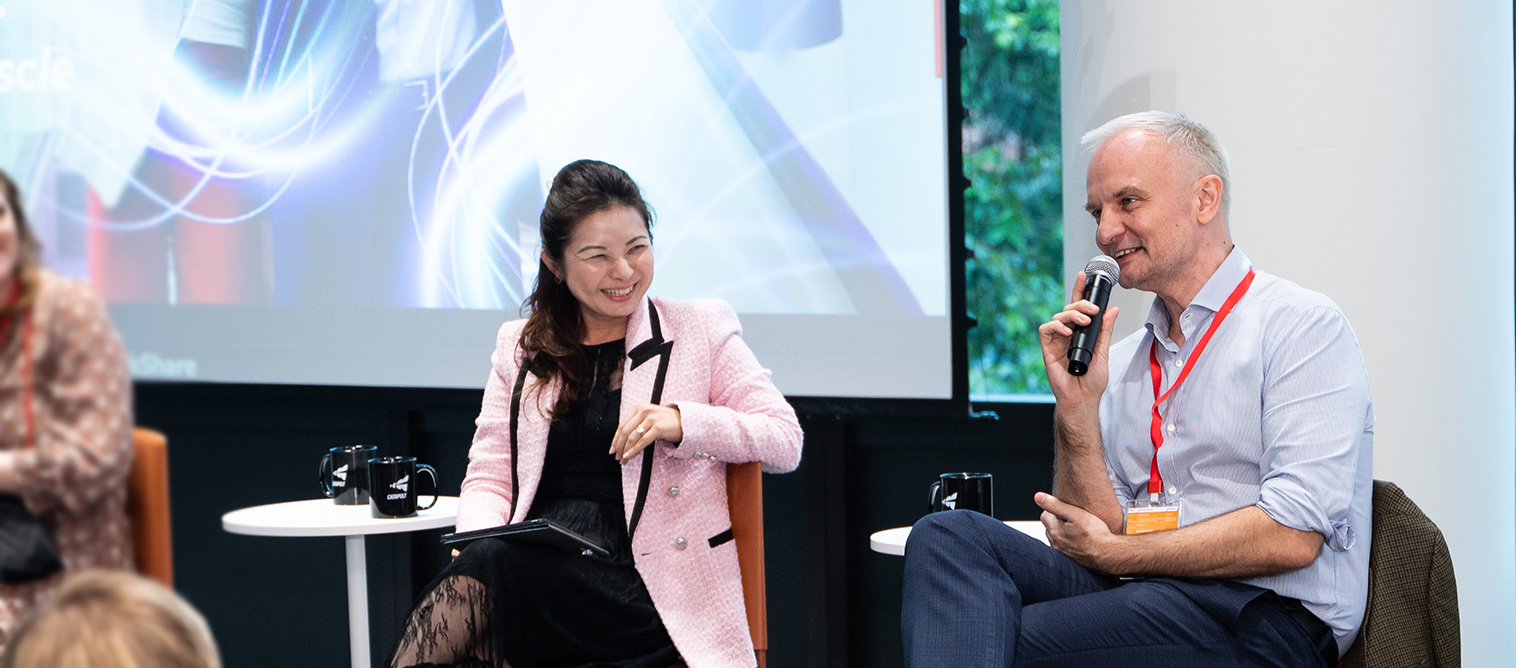
Industry experts argue that leaders will increasingly need to flex a different kind of management muscle at a panel connected to the opening of IMD’s new Executive Learning Center in Singapore.
Social capital – defined by Harvard Business Review as the relationships that make organizations work effectively – is becoming increasingly critical to the effectiveness of leaders as they seek to foster collaboration, drive innovation and manage stakeholders.
With this in mind, a group of international industry experts convened to exchange their views on how leaders today can activate their social capital in a hybrid workplace and flex their new leadership muscle.
The panel discussion was hosted by Catapult on 1 December at the soft opening of its first shared executive learning center at Rochester Commons, where IMD’s new Executive Learning Center is located.
Building social contracts
Professor Misiek Piskorski, Dean of IMD Asia and Oceania at IMD, opened the event with a practical demonstration of what social capital meant. “Over the next 30 seconds, turn around, and share one thing [with that person] that you think nobody else knows,” he told the room of delegates. “Now that is social capital.”
Karina Kuhlmann, regional head of learning for Asia-Pacific at Visa University, called social capital a “glue” that holds an organization together.
“Instead of being solely focused on organizational performance, leaders should also take time out to make connections and understand what’s going on with people and their lives,” she said.
The concept of social capital has implications in terms of social obligations, said Dr James Andrade, head of Catapult. “When I think about social capital, I think of social contracts, which are based on corporate values. If you live by social contracts, you will do well and succeed in an organization. The challenge for leaders and managers is when those behaviors don’t align with those values.”
Designing a human-centered organization
Social capital starts with leadership. A human-centered leader is one who will prioritize the social contract between the organization and its employees, according to Andrade.
“If you are going to have an employee-centric organization, it’s important to know your employees. Do you really know your employees and their motivations? Those are the key things to know when designing an employee-centric organization,” he said.
He also explored how organizational leaders can strengthen social capital in the workplace by providing them with greater social support.
Citing the example of new soldiers who join the military forces in the US, he said: “They [military leaders] push but they also support. Everyone helps everyone out. They don’t look at them like they’re soldiers; they’re creating leaders.”
How to develop social capital
One major takeaway from the panel discussion was how diversity and inclusivity are imperative to the development of social capital at the workplace.
Referencing Ronald S Burt’s structural hole theory of social capital as a metaphor for competitive advantage, Piskorski highlighted that holes in an organization’s social structure can provide an important source of diversity and create advantages for both the individual and organization.
He explained: “One of the fundamental findings in the literature of social capital is that you will make the universe better off if you hang out with people who don’t know each other.”
This is based on the structural hole theory, which revolves around connecting people who are disconnected from each other.
To boost network diversity and strengthen organizational social capital, leaders should listen to voices that have yet to be heard, said Merle Chen, Director, Enterprise Academy, Enterprise Singapore.
A business leader looking to embrace social capital must also be prepared to ask tough questions. “For example, you can see the multiculturalism in Singapore based on its housing estate policy, where there is compositional diversity. And COVID-19 was a great example of different people coming together to help each other,” said Chen. “But the wider question is: how do you harness that in a more extensive way?”
Activating social capital
While it was clear that leaders play a crucial role in promoting social capital at the workplace, one top issue addressed by the panelists was: how can social capital be ‘activated’?
One way is by adopting a mindful and purposeful approach to building social connections and networks at the organization, explained Piskorski. “It’s about people going to great lengths to build relationships. For example, some people will build a personal board of directors. Others will make it a point to call a person across the globe on a regular basis on a day of the month. Making this a habit is extremely important, especially when you make it a practice as opposed to just letting it happen randomly,” he said.
In closing, the panelists had a unanimous take – there was a need for open communication to activate social capital in a hybrid workplace, and to build new and meaningful connections and promote social capital, business leaders had to be honest and transparent. Andrade quipped, “If you don’t know, just say you don’t know.”


